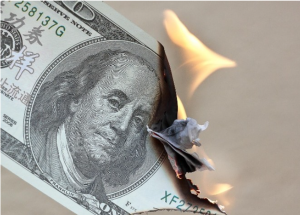When homeowners lose a property to foreclosure, there’s often hope that some financial relief might come in the form of excess proceeds — the funds left over after the mortgage debt and foreclosure costs are satisfied. But in certain cases, a shadowy obstacle called a “ghost lien” can appear out of nowhere and swallow up those proceeds, leaving former homeowners with nothing.

The Subprime Era and the 80/20 Loan Structure
During the housing boom between 2000 and 2008, 100% financing was common. Many lenders structured these deals with two mortgages:
- 80% first lien (the primary mortgage)
- 20% second lien (a “piggyback” loan, often with higher interest rates)
When the housing market collapsed in 2008, countless mortgage companies failed. The first-lien mortgages typically went into foreclosure, but what happened to all those second liens?
The Disappearance of Second Liens
Many lenders charged off second liens, removing them from their books as uncollectible debts. Instead of chasing borrowers, they sold these loans to debt collectors for pennies on the dollar. The collectors often did nothing — sending no bills, making no phone calls, and making no collection efforts. Borrowers reasonably assumed those debts had vanished. But their assumptions wrong.
The Ghost Returns at Foreclosure
Years later, when a property goes through foreclosure on the first lien, those old second liens suddenly reappear. Debt buyers, now holding the paper, file claims against the foreclosure sale proceeds.
Here’s one example of how it can play out.
- The second lien might have been $40,000 originally.
- With years of accumulated interest, the claim balloons to $90,000.
- That entire amount is submitted as a claim, consuming all available excess proceeds.
The borrower, who thought the debt had disappeared, discovers that the “ghost lien” has wiped out the funds they expected.
Real-World Impact
This is not theoretical. It is happening today. In recent cases, these ghost liens have appeared multiple times, erasing what should have been meaningful financial recoveries for borrowers after foreclosure.
Why Borrowers Should Care
- False sense of closure: Borrowers think a lien is gone just because no one collected on it for years.
- Hidden claims: Debt buyers often stay silent until foreclosure proceeds are available.
- Excess proceeds at risk: A borrower expecting tens of thousands of dollars may end up with nothing.
Conclusion
Ghost liens are a sobering reminder that in real estate, “gone” doesn’t always mean gone. Old debts from the subprime era can resurface years later, consuming foreclosure excess proceeds that borrowers might have counted on. Anyone pursuing these proceeds should be prepared for the possibility that a silent lien could come back to life—just when it matters most.
Gaylene Rogers Lonergan
Board Certified Residential and Commercial Real Estate Attorney
Lonergan Law Firm, PLLC
12801 N. Central Expressway, Suite 150, Dallas, Texas 75243
(214) 503-7509
grogers@lonerganlaw.com | LonerganLaw.com
© Gaylene Rogers Lonergan and Lonergan Law Firm, PLLC, 2025. All rights reserved. This article is provided for educational reasons exclusively and is not meant to be construed as legal advice. The Lonergan Law Firm, PLLC, will represent you only after being retained and that agreement is made in writing.







